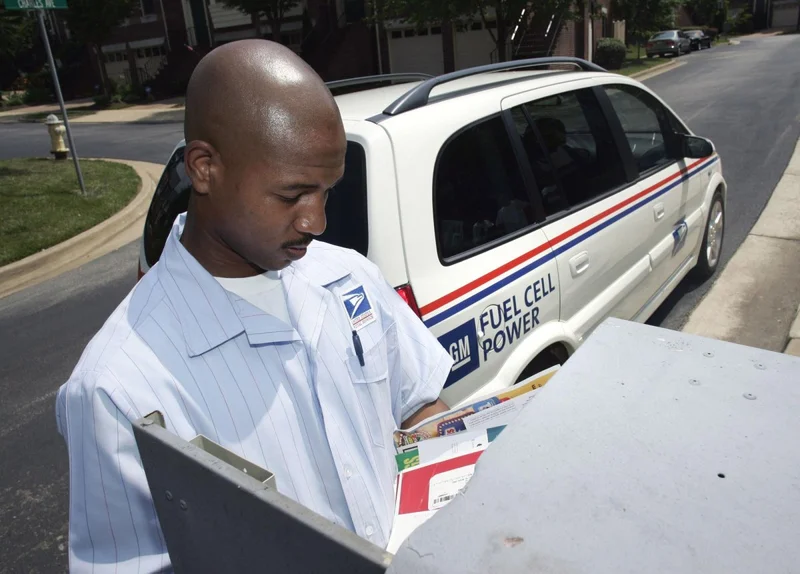USPS Financial Loss: Mega Millions Distraction?
Alright, let's dive into this USPS situation. A $9 billion loss sounds bad, and it is bad, but the devil's always in the details. The Postal Service just announced its financials for the 2025 fiscal year, and while a $9 billion net loss is eye-watering, it's actually a slight improvement from the $9.5 billion loss the previous year. Progress? Maybe. But let's not break out the champagne just yet.
The Revenue-Cost Imbalance
Postmaster General David Steiner calls it a "significant systemic annual revenue and cost imbalance." Corporate speak, sure, but he’s not wrong. Revenue did increase by $916 million (about 1.2%), driven by the growth of USPS Ground Advantage and those strategic price hikes. But expenses? They're still outpacing revenue, leaving the USPS stuck in a financial hole.
First-Class Mail, the bread and butter of the USPS, saw a revenue bump of $370 million (1.5%), even with a volume decline of 2.2 billion pieces (5%). Marketing Mail also saw a similar trend: revenue up $350 million (2.3%) despite a volume decline of 764 million pieces (1.3%). Shipping and Packages revenue only increased $315 million (1.0%) on a volume decline of 415 million pieces (5.7%). What does this tell us? They're charging more for less. Is that a sustainable business model? I have my doubts.
And here's the part of the report that I find genuinely puzzling. Total operating expenses increased by $317 million (0.4%). CFO Luke Grossmann says this is "primarily due to increases in compensation costs and other operating costs." But the USPS also offered voluntary early retirement to some employees. How do you reconcile those two statements? Were the retirement packages more expensive than the salaries they were trying to cut? The filing doesn't say.
Pushing for Reform
The USPS isn't just sitting around wringing its hands. They're pushing for administrative and legislative reforms, including changes to retiree pension benefit funding rules, diversification of pension assets, raising the statutory debt ceiling, and workers’ compensation administration reform. These are all complex issues with potential long-term impacts, but the core problem remains: people are sending fewer letters.

The USPS has lost over $100 billion since 2007, even after a $50 billion financial package from Congress in 2022. That's a lot of taxpayer money propping up a service that seems increasingly outdated. Former Postmaster General Louis DeJoy (remember him?) resigned in March after nearly five years of operational changes that supposedly halved projected 10-year losses from $160 billion to $80 billion. But even $80 billion is a staggering amount. And were DeJoy's cuts actually beneficial? It's hard to say for sure.
They've also been hiking prices. The cost of a first-class stamp rose to 78 cents this year, up from 73 cents. That's a 46% increase since 2019. At what point does the price become so high that it further accelerates the decline in mail volume? It's a classic death spiral scenario: raise prices, lose customers, raise prices again to compensate.
In February, some politician (who shall remain nameless) called USPS a “tremendous loser for this country” and suggested merging it with the Commerce Department. That's a political football, and I'm not touching it.
Mail volumes dropped 5% in the year ended September 30, hitting the lowest level since 1967. That's a clear sign that the USPS is facing a structural decline in its traditional business. They cut 10,000 positions this year through a voluntary retirement program as part of their cost-reduction efforts. But is that enough? As the agency faces these challenges, they are looking to USPS: To correct our financial imbalances, we must explore new revenue opportunities.
Running Faster Just to Stand Still
The USPS is trying to innovate (USPS Ground Advantage), cut costs (retirement packages), and lobby for reform (pension changes). But it feels like they're running faster and faster just to stand still. The fundamental problem is that the world has moved on. Email, electronic payments, and online communication have all eroded the need for traditional postal services. Can the USPS adapt quickly enough to survive? That's the billion-dollar question. Or, more accurately, the nine-billion-dollar question.
The Inevitable Stampede
Tags: usps financial loss reforms
Alibaba Stock Plunge: White House Concerns and Wall Street's Reaction
Next PostBlackstone: What's the Deal with the SF Four Seasons Buy and All Those Griddles?
Related Articles
